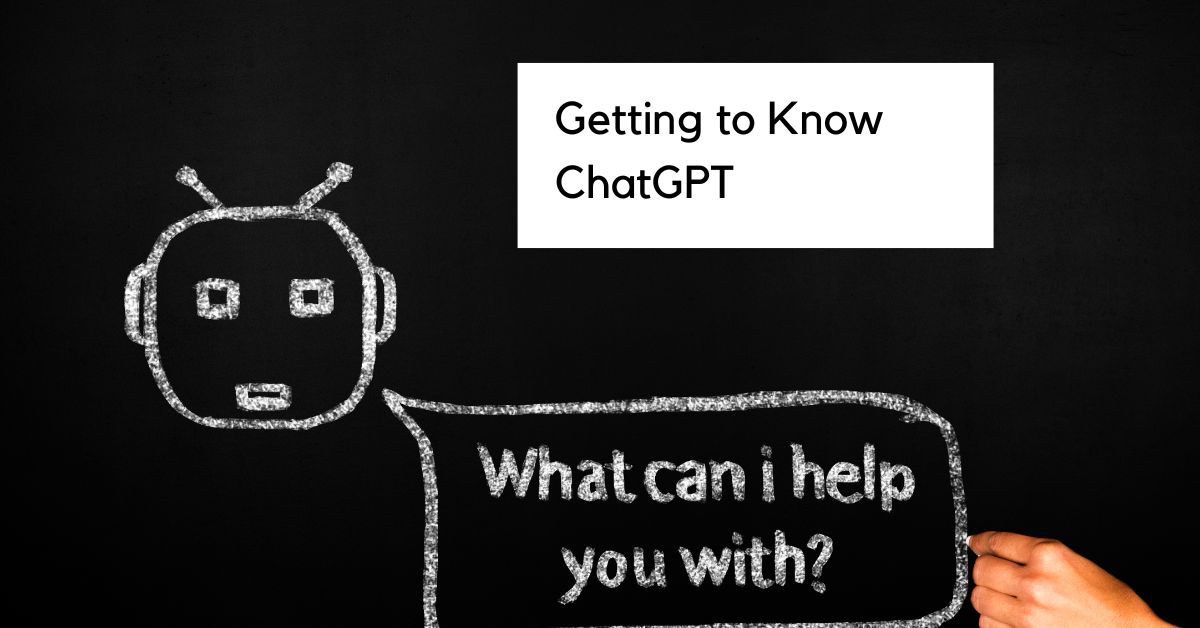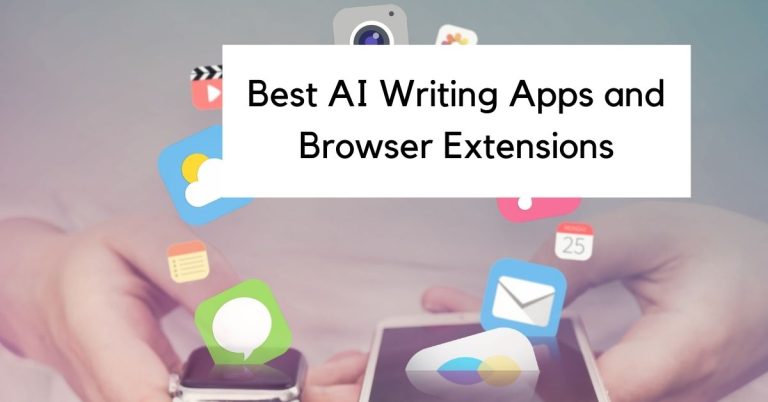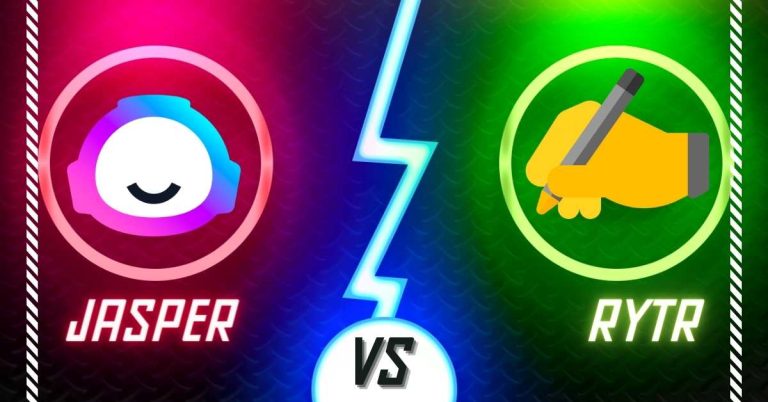Getting to Know ChatGPT: An Overview
ChatGPT has taken the internet by storm with its ability to generate human-like responses to questions and prompts. Many say that it’s game-changing and represents a major advancement in the field of AI. Is it really? Let’s take a look.
What is ChatGPT?
ChatGPT is a program that can understand and respond to the natural language used by everyday people. It does this by combining machine learning algorithms and artificial intelligence techniques.
The program has been trained on a huge amount of text data, which has allowed it to learn to generate responses that sound similar to human speech.
When you ask it a question or give it a prompt, it processes your input using its knowledge of the language and its training data and then generates a response based on what it has learned. This allows it to have conversations with users and provide useful information.
ChatGPT is specifically designed to understand and generate natural language. This makes it different from many other chatbots, often designed to provide pre-determined responses to specific inputs or perform specific tasks. Its ability to remember the previous questions you asked and respond differently makes it stand out from all the other chatbots out there.
Because ChatGPT has been trained on a huge amount of text data, it can generate more human-like and coherent responses than many other chatbots. This makes it better suited for having conversations and providing information in a way similar to a human.
Additionally, because ChatGPT is a language model and not a specific application or program, it can be used to power many language-based applications and services.
Who created ChatGPT?
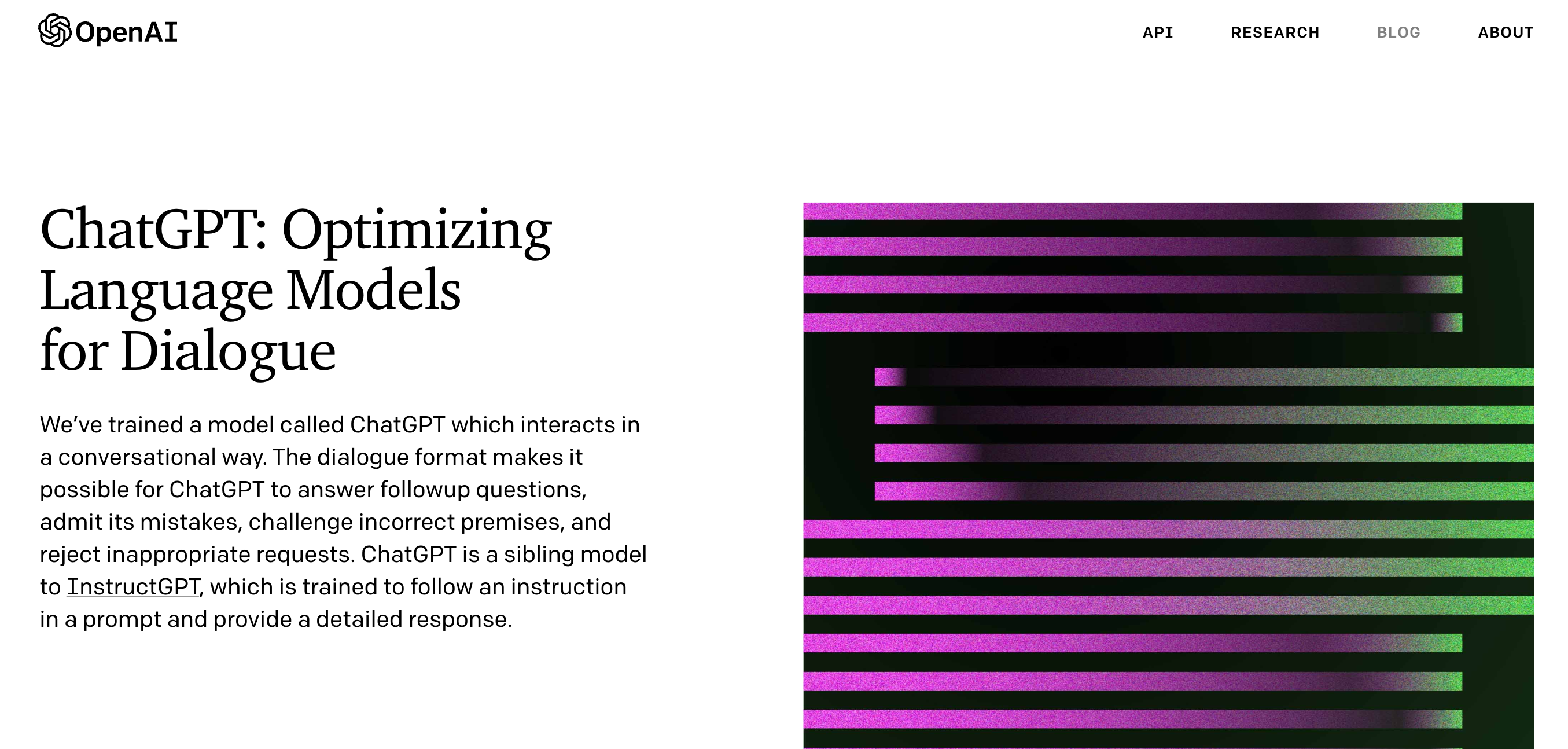
OpenAI released ChatGPT, the for-profit research group that produced GPT-3, the advanced language AI writing model, and DALL-E 2, the sophisticated AI art generation software.
OpenAI is a research institute that is focused on developing artificial intelligence and advancing the field of machine learning. OpenAI conducts research in a variety of areas related to AI and machine learning, including natural language processing, computer vision, robotics, and reinforcement learning.
ChatGPT is one of several language models developed by OpenAI, and it is designed to generate human-like responses to questions and prompts.
The development of ChatGPT and other language models is part of OpenAI’s broader mission to advance the field of artificial intelligence and to develop AI technologies that can be used in a wide range of applications..
In addition to its research efforts, OpenAI also works to promote the responsible development and use of AI, and to provide access to its technology and resources to the broader AI community.
How ChatGPT Works
ChatGPT is a large language model trained by OpenAI. This means that it has been trained on a massive amount of text data, which has allowed it to learn to generate human-like responses to questions and prompts.
When you interact with ChatGPT, your input is processed by the model, which uses its knowledge of language and its training data to generate a response. The model uses a combination of machine learning algorithms and artificial intelligence techniques to generate these responses.
To generate its responses, ChatGPT uses a technology called “transformers,” which are a type of neural network architecture specifically designed for processing natural language.
The model also uses a technique called “masked language modeling,” which involves predicting the next word in a sequence based on the previous words in the sequence. This allows the model to generate coherent and fluent responses that are similar to those produced by a human.
Overall, ChatGPT is a powerful language model that can generate human-like responses to questions and prompts.
It is able to do this by using a combination of machine learning algorithms and artificial intelligence techniques, which allow it to process and understand natural language input.
Types of Questions You Can Ask ChatGPT
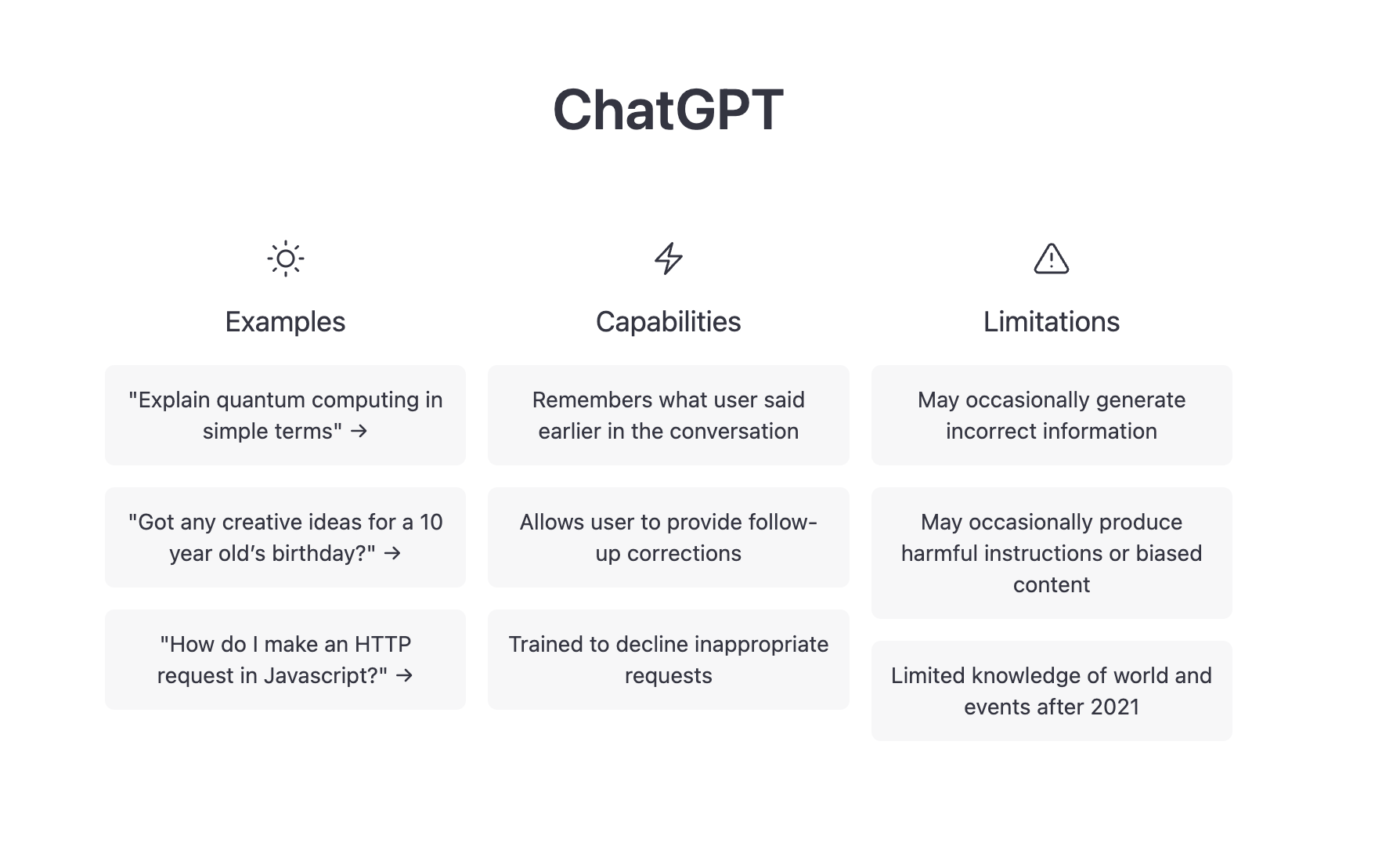
You can ask ChatGPT any question, although it may not be able to answer. It has been trained on a wide variety of text data. This allows it to understand and generate responses to a wide range of questions and prompts. Some examples of the types of questions you could ask ChatGPT include:
- General knowledge questions, such as “What is the capital of France?” or “Who invented the lightbulb?”
- Questions about current events, such as “What is the latest news on the pandemic?” or “What happened in the latest presidential debate?”
- Questions about personal interests, such as “What are some good books to read?” or “How do I cook a perfect steak?”
- Questions about general topics, such as “What is quantum mechanics?” or “What is the meaning of life?”
Overall, ChatGPT is capable of understanding and generating responses to a wide range of questions and prompts, so feel free to ask it anything you like! If it doesn’t answer, that’s helpful information for the developers to know to improve the platform.
Is ChatGPT free?
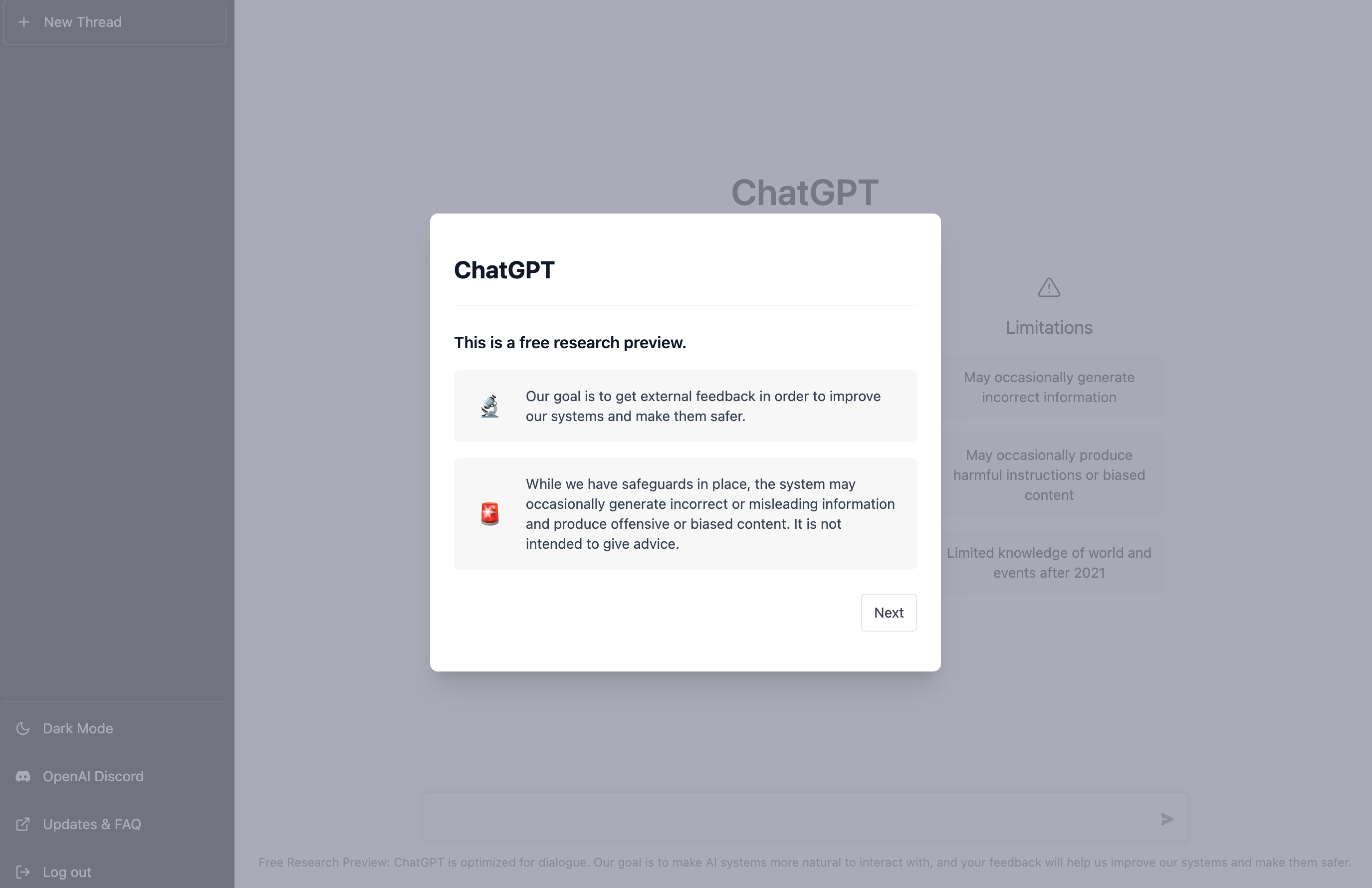
At the writing of this article, ChatGPT offers free use as its a research preview of the tool. OpenAI released ChatGPT in the hopes of getting external feedback from its users to improve the tool.
While the ChatGPT tool itself is free at this time, OpenAI charges businesses to use its underlying language and related AI models.
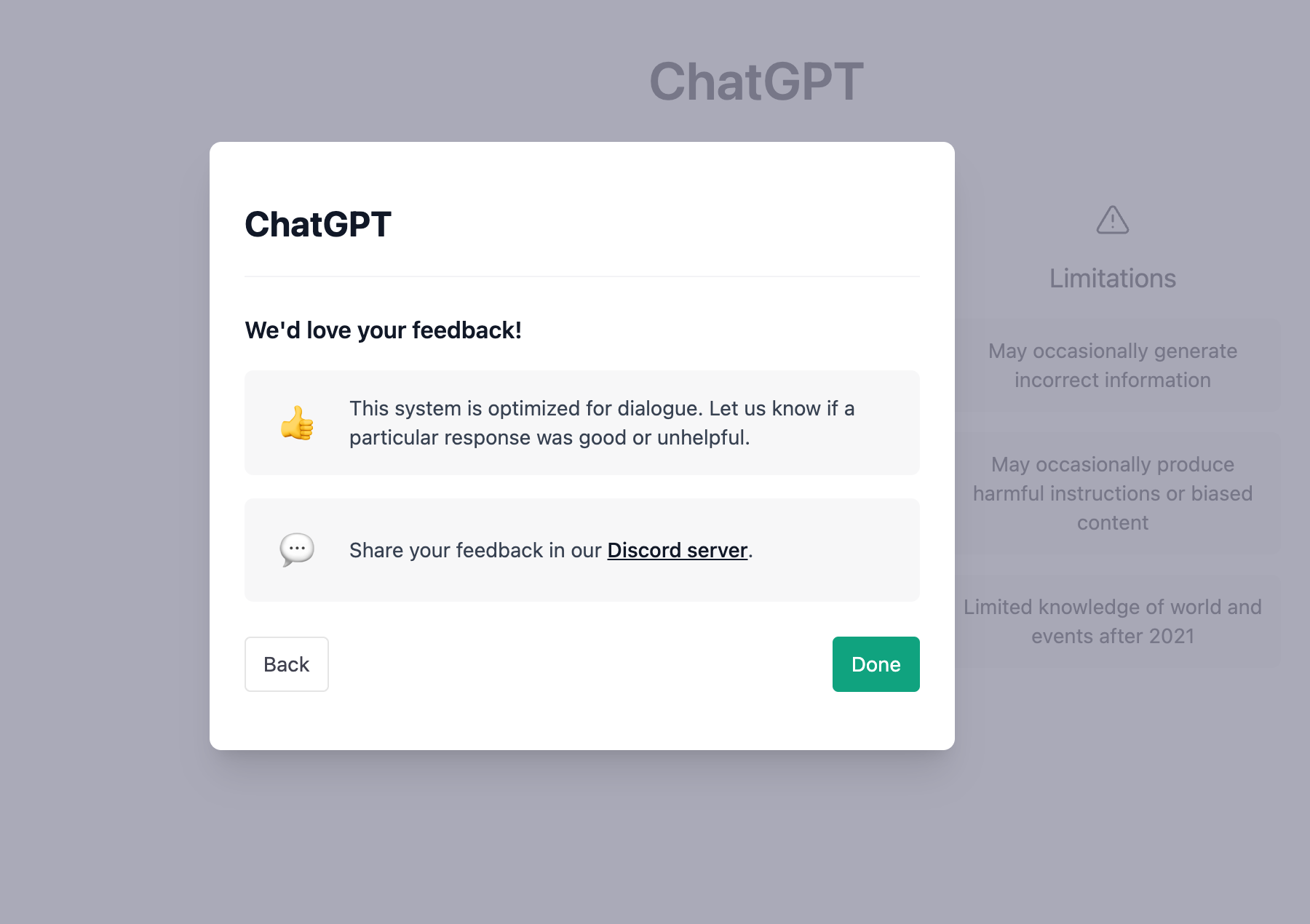
How to Access ChatGPT
Currently, it’s difficult to access ChatGPT because so many people are eager to try it out and OpenAI’s resources do not support the demand. 5 days after the tool’s launch, ChatGPT reached 1 million users.
However, you can visit chat.openai.com to see if you’re able to get a spot to try it out. If they’re at capacity, you can sign up for their waitlist. You can also periodically check back in and see if they have space for you to use it.
The first time I tried to access ChatGPT, I got the following message that it’s “at capacity right now” and to try back later. It has a clever waiting screen that demonstrates the capabilities of the language model.
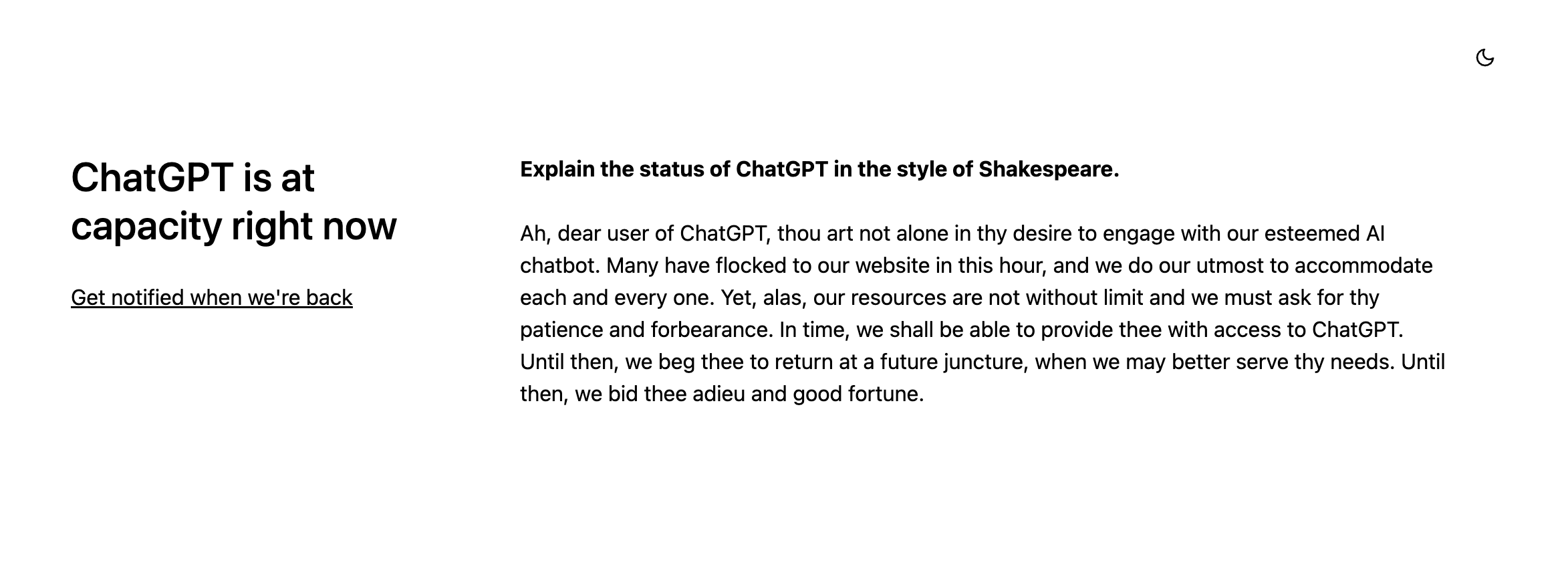
The screenshot example above shows the humorous result of the prompt “Explain the status of ChatGPT in the style of Shakespeare.”
Create an OpenAI account
If you’re lucky enough to time it right and get access to ChatGPT, you’ll need to make an OpenAI account, if you don’t already have one.
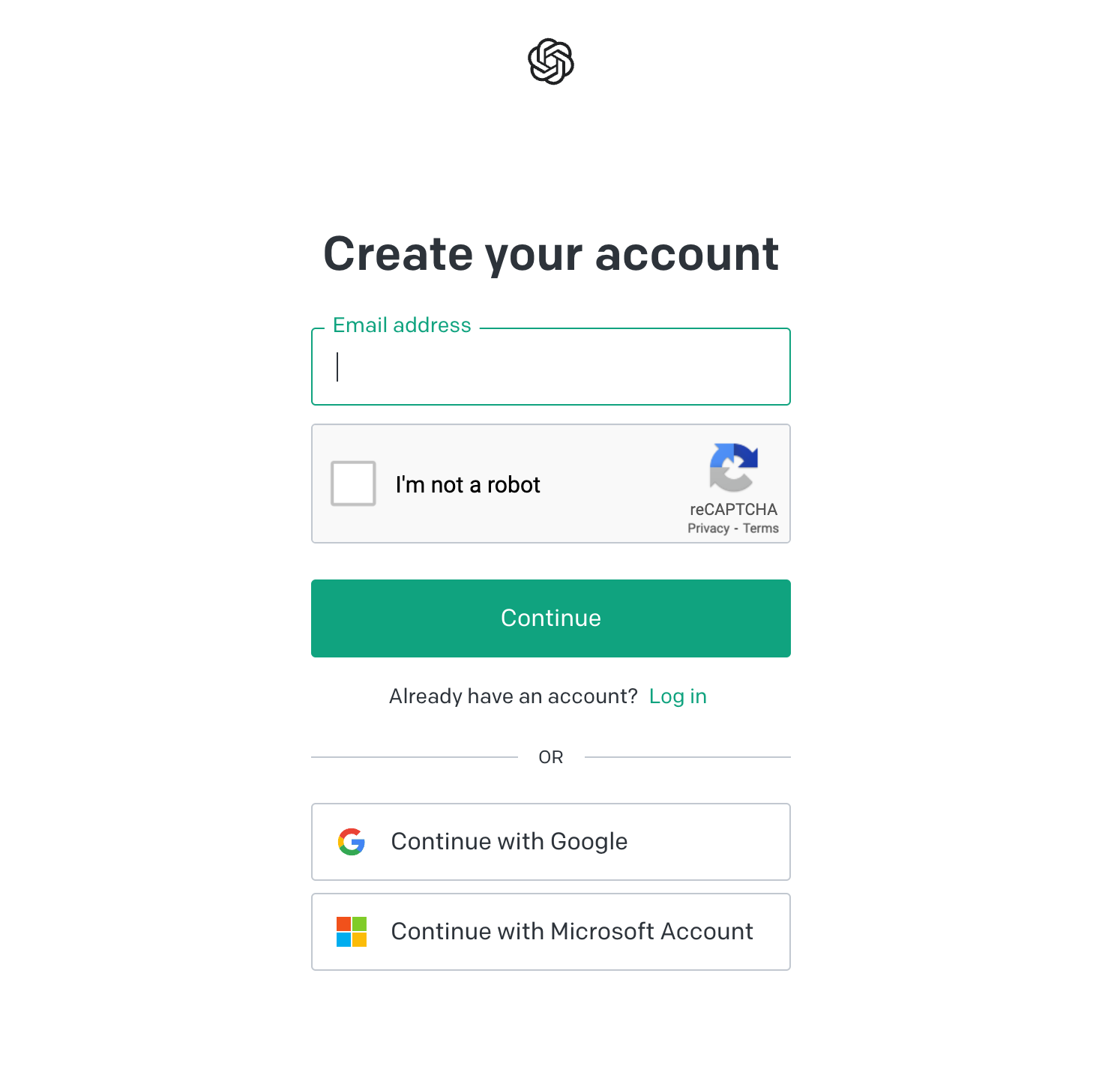
OpenAI gives you the option of manually creating a login account or connecting your Google or Microsoft.
You’ll be taken through a sign up flow that asks you how you intend to use OpenAI technology (e.g. whether or not you plan to use it for personal use or for business).
How to Use ChatGPT
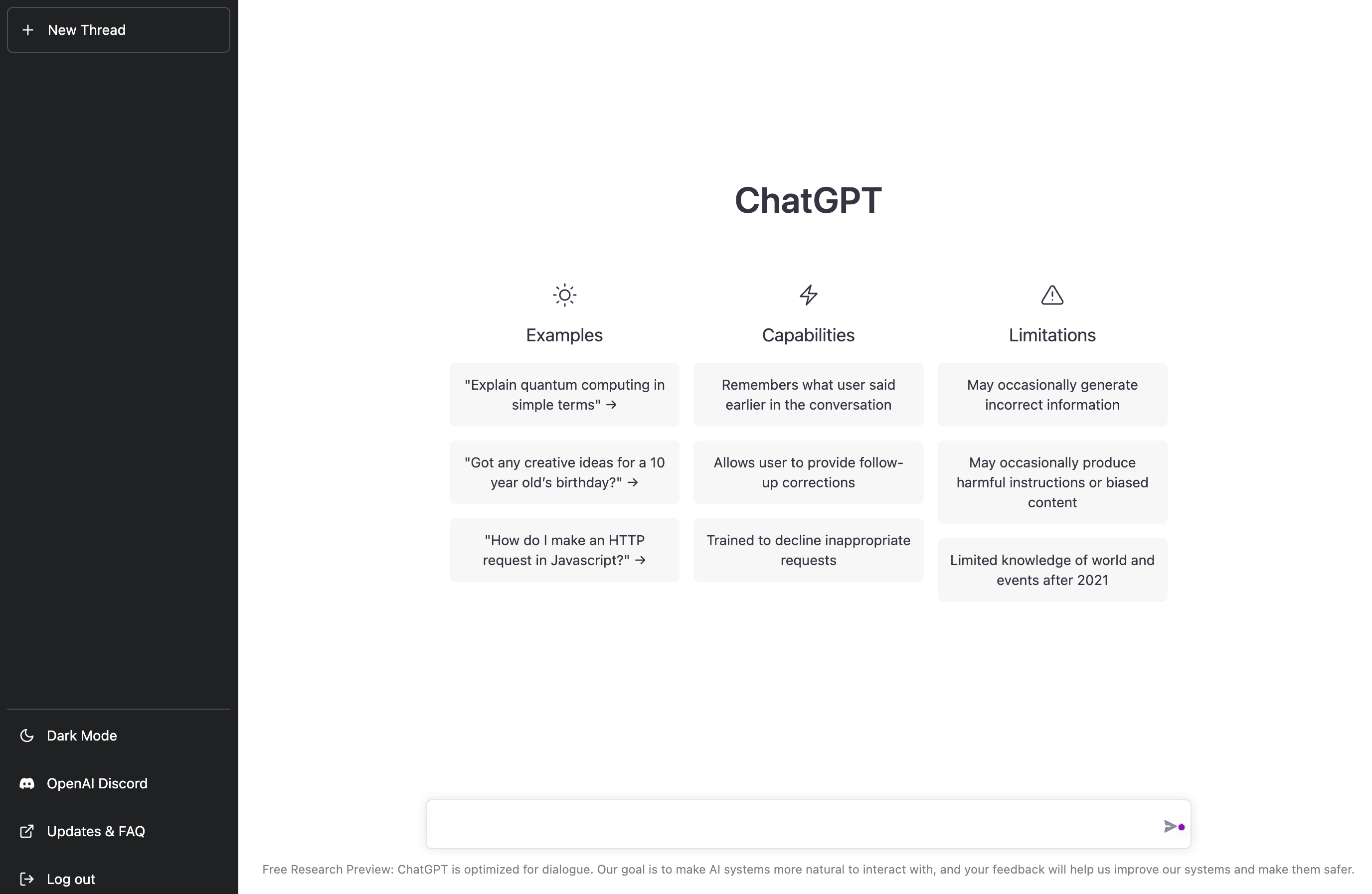
ChatGPT’s user interface is simple and clean. It provides you with a few examples to start with, the tool’s capabilities, and reminds you of its limitations.
There’s a bar at the bottom of the main screen where you can enter in your question.

After ChatGPT generates a response, you can give it a thumbs up or down to help train the AI system to know whether the response is good.
In this case, I selected a thumbs up. A pop up window gave me the opportunity to provide additional feedback to help train it to give a better answer.
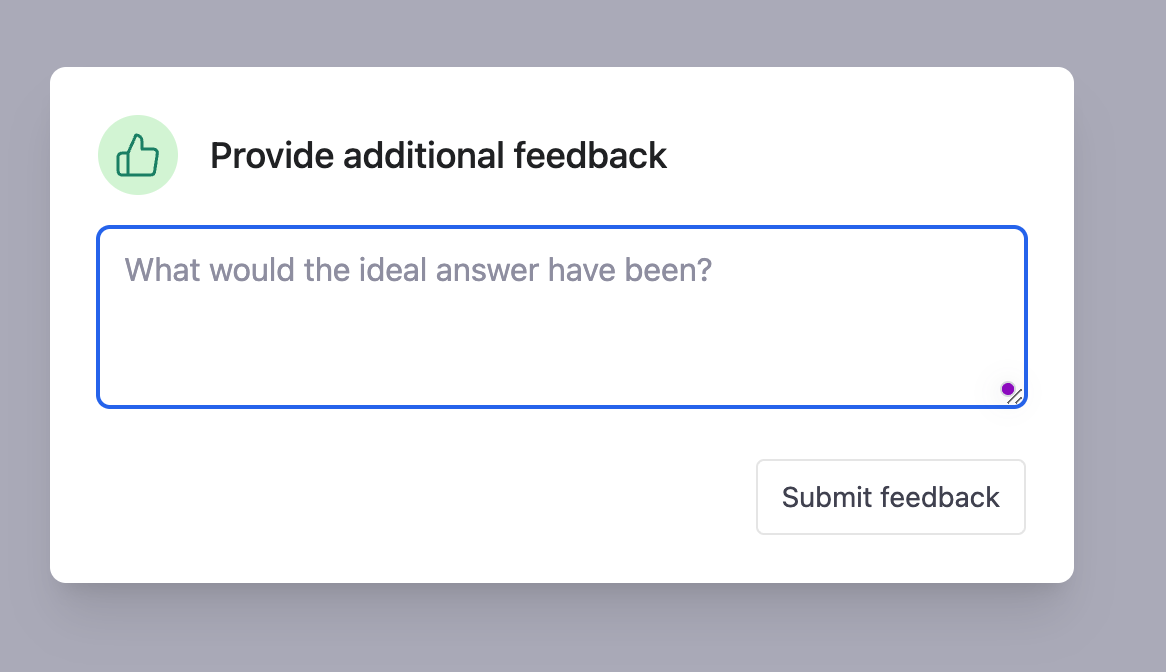
If the tool provides you with an output you don’t like, you can select a thumbs down. It gives you the opportunity to provide additional feedback and select whether the response was harmful/unsafe, untrue, or not helpful.
I saw an article about using ChatGPT to do holiday shopping, so I decided to give that idea a try myself.
I asked it what I should get for my redneck uncle who likes hunting. I’d read that it remembers what you’ve told it, so after it gave me an answer to my first question, I wrote a factual sentence saying that he likes football. It took that information and gave additional suggestions.
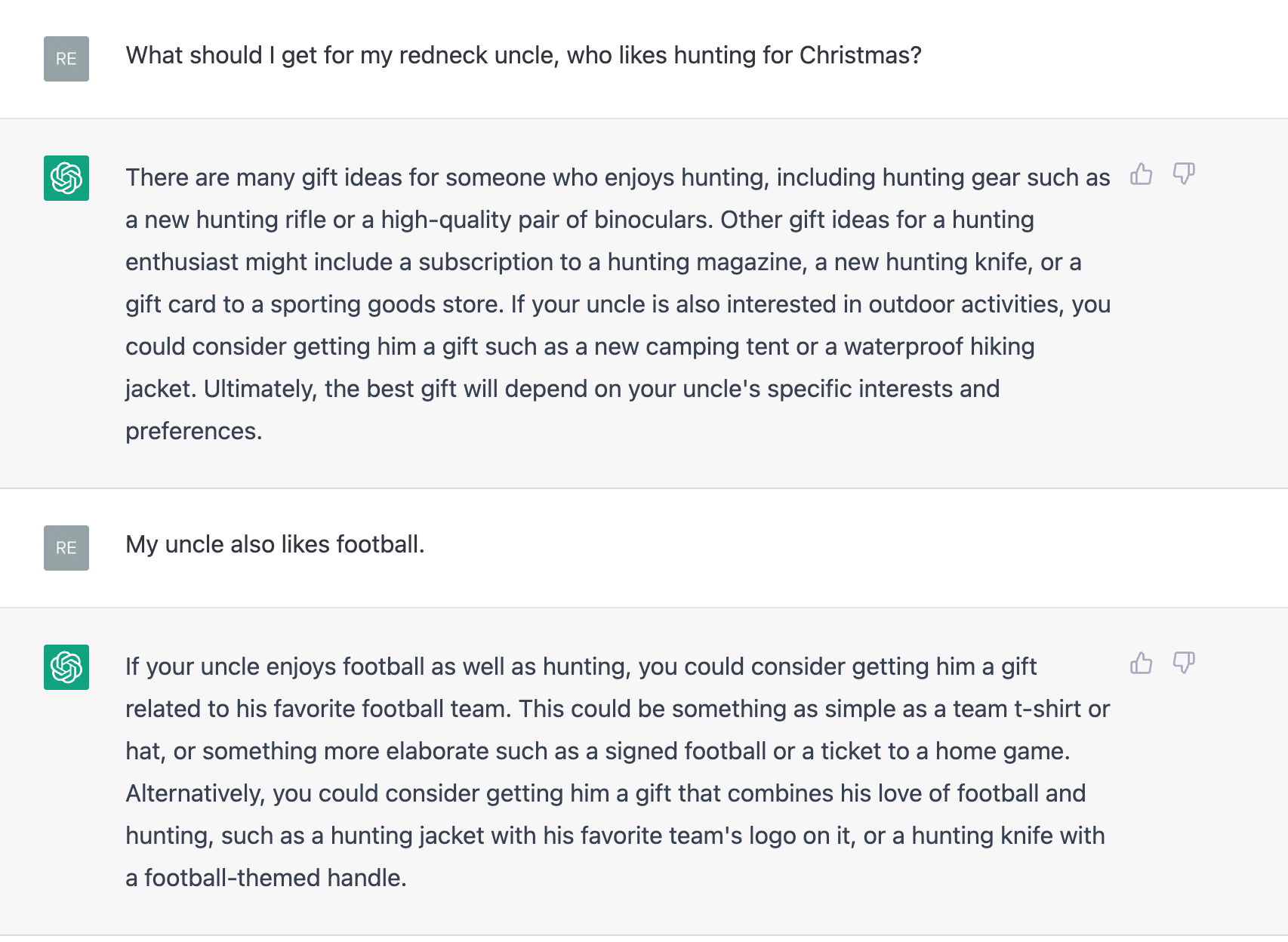
I decided to see if I could ask a general question that would generate code, since I’d also read about ChatGPT being able to do that. I’ve gotten so used to having to write my questions in a way that the computer will understand, so I was pleasantly surprise to see that it generated code for me on my first question.
I asked “How do I create a blue background for my website?” and the tool proceeded to give me an explanation of CSS and then a few code snippets.
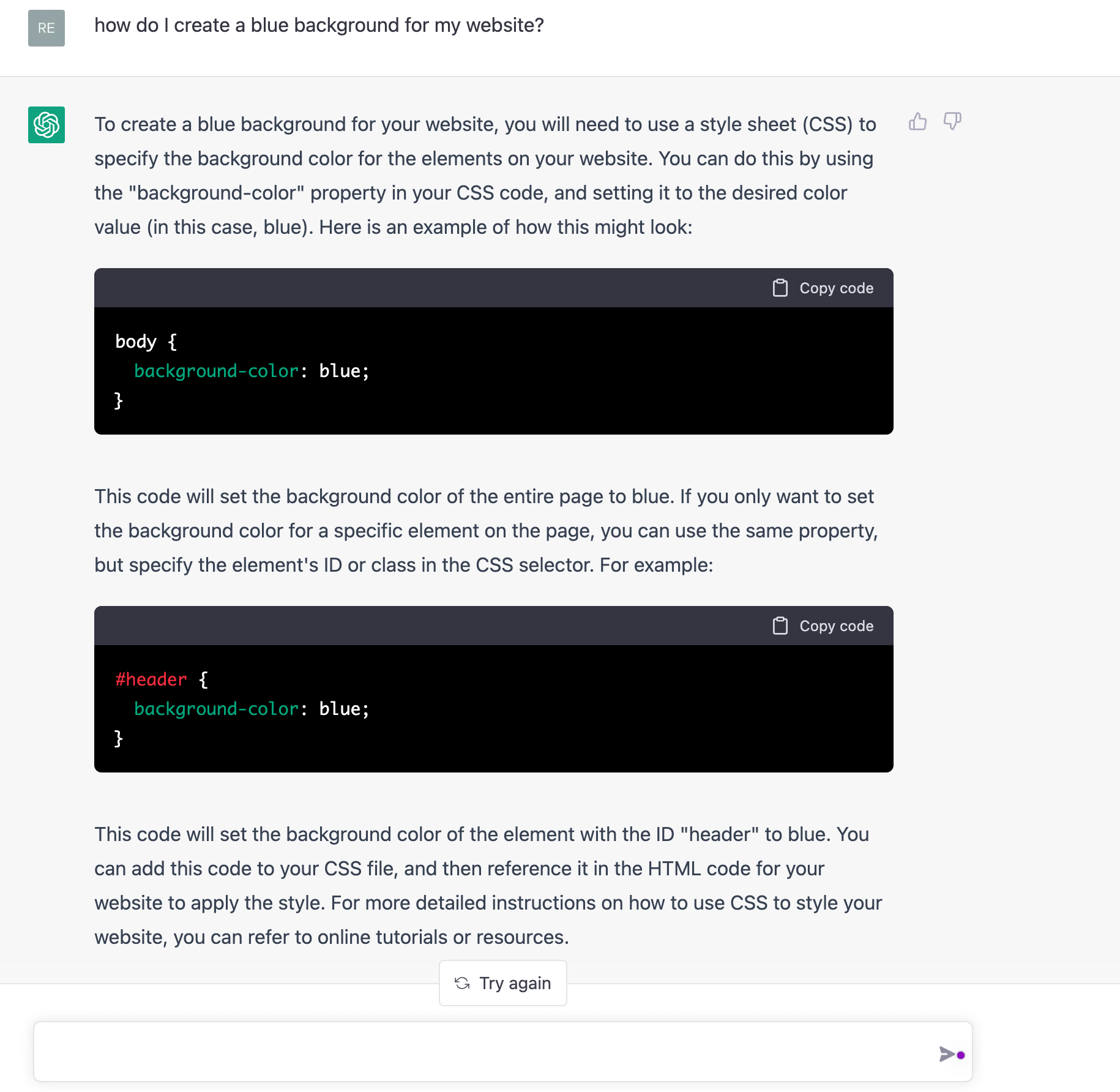
Will ChatGPT replace using a search engine?
Is ChatGPT the new Google? Some people seem to think so. The rising popularity of ChatGPT has brought up the question of the tool replacing search. It appears that at least a segment of the population prefers getting information by asking a question rather than typing in a search query.
As of right now, Google still has a major advantage over ChatGPT. People use ChatGPT and then verify the answers in Google.
If ChatGPT and other chat-based tools continue to grow in popularity, Google may have to update its search technology to center on chat more prominently.

I asked the tool whether it might replace Google and it doesn’t seem to think so. Only time will tell!
How does ChatGPT use my data?
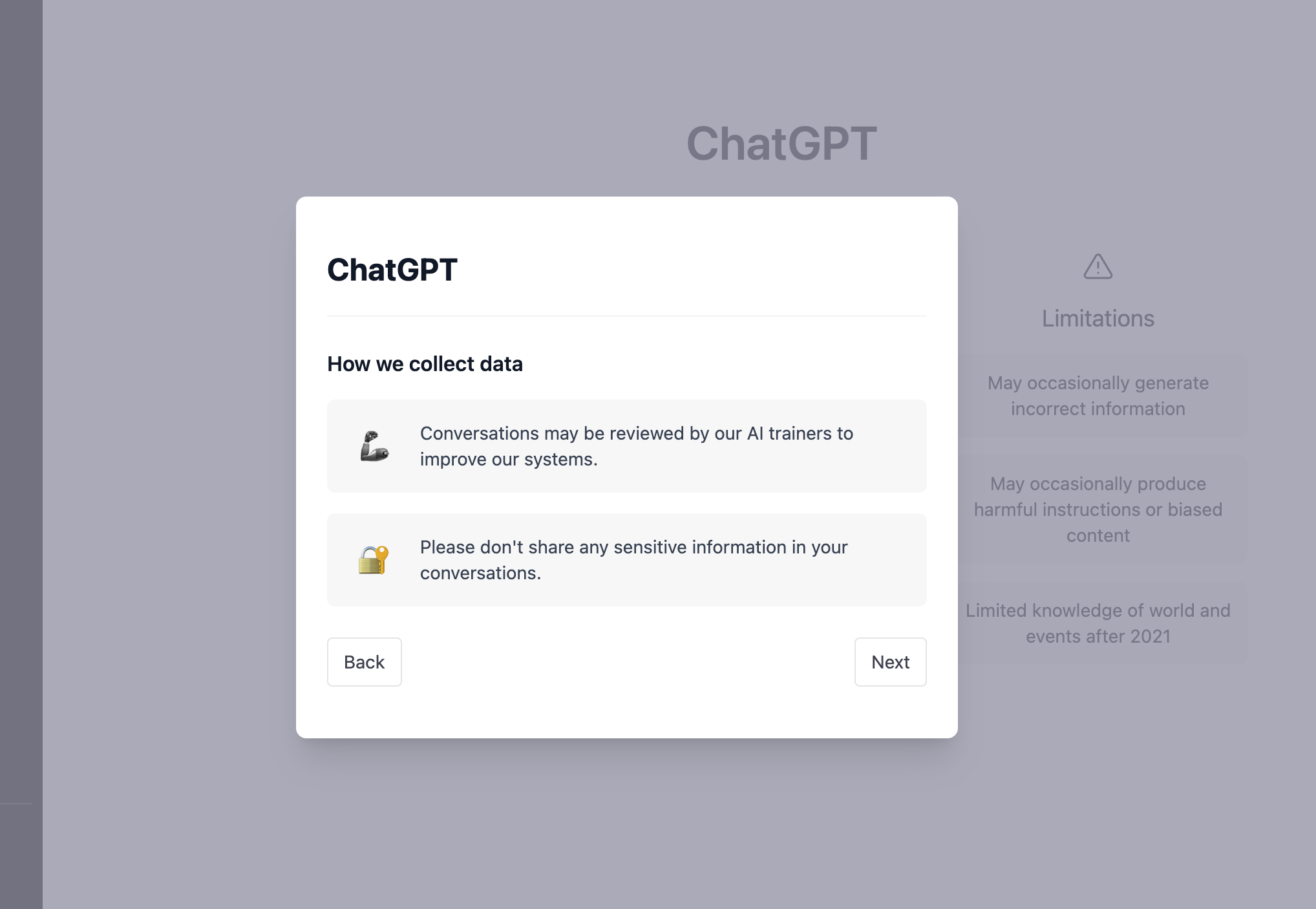
When you first log in to use ChatGPT, the AI system tells you that your conversations may be reviewed by the AI trainers to improve their systems. It recommends that you don’t share any sensitive information while using the tool.
I asked the tool how it uses my data and it told me that your personal data does not get collected. It says your input is processed by the model to generate a response.

I think this might be an instance of the tool providing an incorrect answer. According to the OpenAI privacy policy, they do collect usage data.
Limitations of ChatGPT
As OpenAI, the creators of ChatGPT, shared on their blog, it does have limitations such as:
- ChatGPT sometimes produces answers that sound plausible but are incorrect or don’t make sense.
- If someone provides an input or prompt that ChatGPT does not recognize, the model may claim not to know the answer. However, if that person rephrases the prompt, ChatGPT can answer correctly.
- Frequently, ChatGPT can be excessively verbose and overuse certain phrases.
- ChatGPT typically guesses what the user intended to ask if someone asks something vague. It would be better if the model asked clarifying questions when given an ambiguous question.
- Despite efforts to warn or block unsafe content, ChatGPT sometimes responds to harmful instructions or displays biased behavior.
The developers are aware of these limitations and plan to mitigate them. Many of these limitations have to do with the way in which the toll was trained. OpenAI plans to make regular model updates to improve upon these limitations.
OpenAI hopes to get user feedback on issues they were unaware of. Through the user interface, users have the option to provide feedback on outputs that seem problematic.
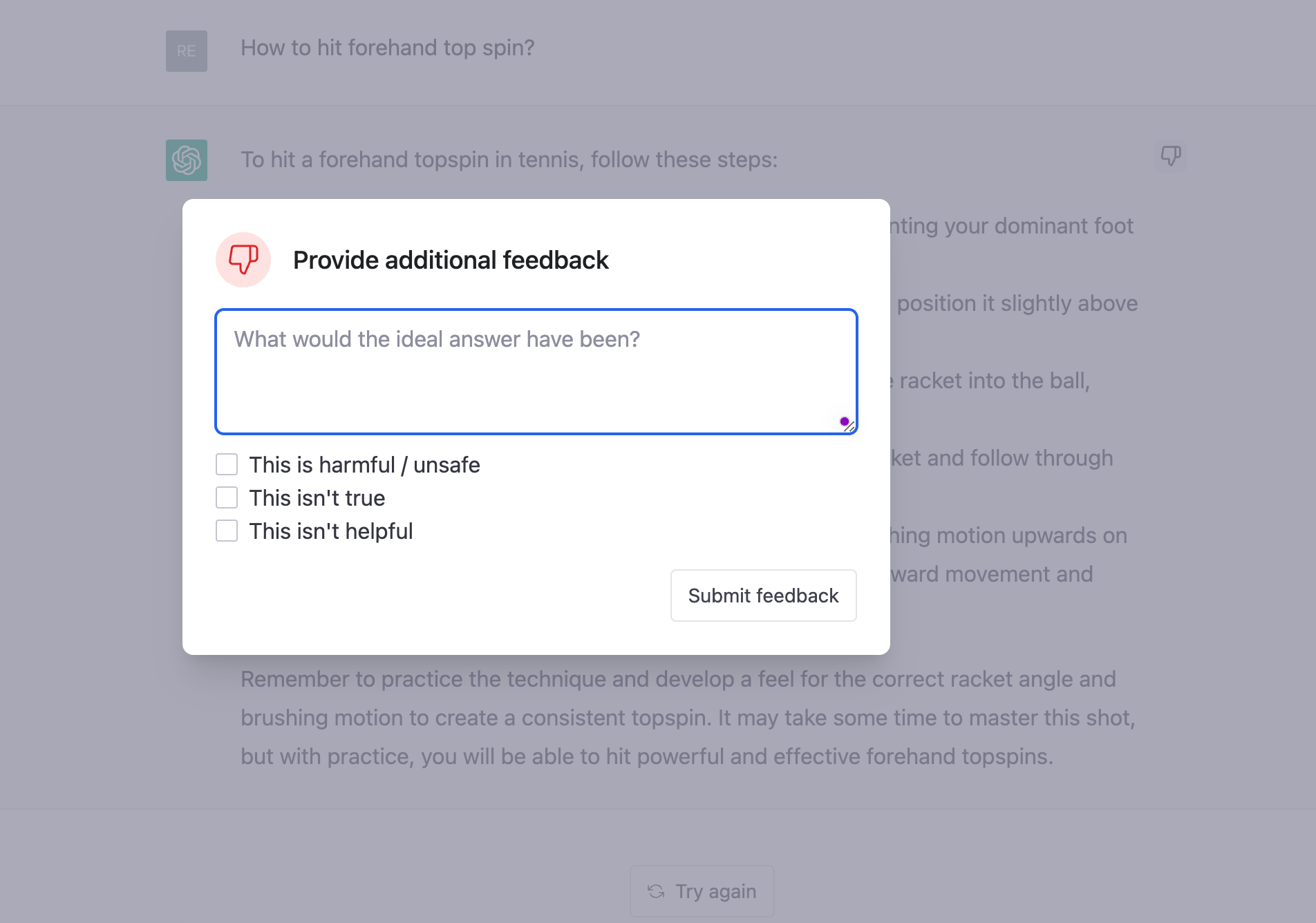
OpenAI uses user feedback to improve ChatGPT and other language models in a number of ways. For example, the organization may collect and analyze user feedback on the quality and coherence of ChatGPT’s responses, and use this information to fine-tune the model’s performance. This can involve adjusting the model’s parameters or modifying its training data in order to improve its ability to generate human-like responses.
In addition to collecting and analyzing user feedback, OpenAI may also use other methods to improve ChatGPT and other language models. This can include conducting research on new machine learning algorithms and techniques, or incorporating additional training data into the model to expand its knowledge and capabilities.
By using a combination of user feedback and other methods, OpenAI is able to continually improve the performance of ChatGPT and other language models.
How do I learn more about ChatGPT?
Many people share what they’ve been doing on Twitter. However, if you’re looking for a dedicated community to this technology and similar ones, you might consider joining OpenAI’s official community space on Discord.
The Discord channel provides a community space for discussing and sharing information about its technology and research. It’s open to the public and anyone can join. OpenAI has moderators and bots to help make sure it’s a safe community. When you join, you have to agree to the rules of the community.
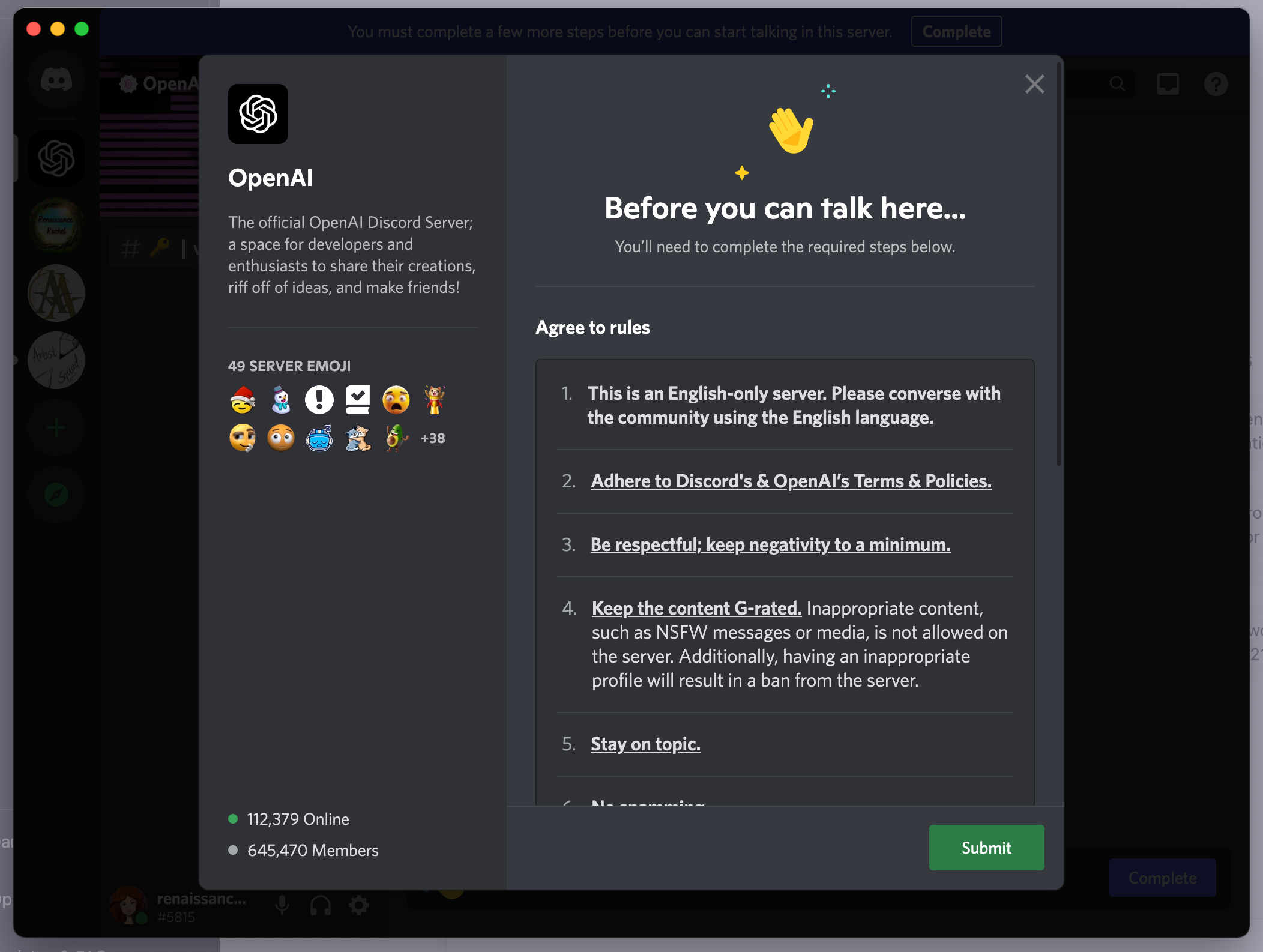
The channel is used for a variety of purposes, including sharing updates on OpenAI’s technology and research, answering questions about its work, and providing a platform for members of the community to discuss and share information related to artificial intelligence. The Discord channel is an important part of OpenAI’s outreach and engagement efforts, and it is a valuable resource for anyone interested in learning more about the organization and its work.
Does ChatGPT replace AI writing tools?
Whether ChatGPT replaces AI writing tools depends on what you want to use the various tools for.
Do you want to have a long form document editor to help you write as you go? Then maybe not.
Do you want to have your writing assistant in the same place as where you’re writing your content? Then definitely not.
Do you want something to help you brainstorm and it’s okay to be in a separate window? Then maybe! I wrote this article in one tool and had ChatGPT open as I wrote.
Final thoughts
When I finally tried ChatGPT, I was pleasantly surprised and felt that it does live up to the hype. It has the potential to be used in a wide range of applications, and it is already having a major impact on the field of AI.
As ChatGPT and other AI language models continue to evolve, they will undoubtedly play an increasingly important role in shaping the future of human-computer interaction.

